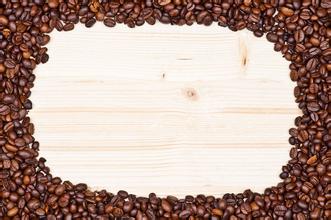Brazilian Coffee Flavor taste the characteristics of the manor producing area introduce Brazilian boutique coffee Brazilian coffee brand
The topography of Brazil is mainly divided into two parts, one is the Brazilian plateau above 500 meters above sea level, distributed in the south of Brazil, the other is the plain below 200 meters above sea level, mainly distributed in the north of the Amazon River basin and the west. The topography of the whole territory is divided into Amazon plain, Paraguay basin, Brazilian plateau and Guyana plateau, of which the Amazon plain accounts for about 1% of the national area. There are three major river systems: Amazon, Parana and San Francisco. The Amazon River is 6751 kilometers long, running through northwest Brazil and covering an area of 3.9 million square kilometers in the Brazilian basin; the Parana River system, which includes the Parana and Paraguay rivers, flows through the southwest, with rapids and waterfalls, and is rich in hydraulic resources; the San Francisco River system, with a total length of 2900 kilometers, flows through the arid north-east and is the main source of irrigation in the region. The coastline is more than 7400 km long and the territorial sea is 12 nautical miles wide. In 2004, coffee production was 2465710 tons. The southeast is the main producing area, accounting for 81.77% of the total output. Seven of the 10 major municipal production areas are in the southeastern state of Minas Gerais and three in the state of Esp í rito Santo. It can be seen that the flat terrain, sufficient light and heat, rich water sources and excellent port conditions have created Brazil's excellent advantages in the production and export of coffee beans. So far, Brazil, as the world's largest exporter of coffee beans, produces 30 to 35 percent of the world's coffee annually, accounting for 1/3 of the world's coffee consumption. Brazilian coffee beans are one of the main raw materials of the world coffee industry. Secondly, it is necessary to understand the export and consumption of Brazilian coffee beans. Coffee is a traditional industry in Brazil. Coffee cultivation in Brazil has been among the best in the world since 1960.
At the top of the list, the average annual output is 24.6 million bags (60 kg each). In 2002, due to favorable weather and a good year for coffee production, Brazilian coffee reached the best level in history, reaching 47.2 million bags, an increase of 59.6 per cent over 28.137 million bags in 2001. According to the report of the United States Department of Agriculture in November 2002, due to the increase in productivity and the increase in the number of plants per unit area, the actual production of Brazilian coffee is much higher than the above figure, which should be 51.6 million bags. In 2002, Brazilian coffee exports reached a 270-year high, with a total export volume of 27.99 million bags (60 kg each), an increase of 19.3 per cent over 23.46 million bags in 2001. Due to the decline in international coffee prices, coffee trade volume was 1.355 billion US dollars, down 5.4 percent from 1.432 billion US dollars last year. Brazil is the world's largest coffee exporter, known as the "coffee kingdom" title. In the past 40 years, the trade volume of Brazilian coffee beans and instant coffee has averaged US $1.38 billion a year. In 2002, the total volume of world coffee trade was 88.7 million bags, and Brazil exported 27.99 million bags, an increase of 19.3% over 2001, accounting for 30% of the world coffee trade volume, ranking first (the second is Vietnam, with 12.2 million bags, accounting for 13.7%), an increase of nearly 8 percentage points over the 22.3% in 1998. Europe is the largest buyer of Brazilian coffee, accounting for 50 per cent of Brazilian exports. In 2002, coffee exports to EC countries reached US $708.7 million, accounting for 52.3 per cent, with most of the rest sold to the United States and Asia. Coffee beans account for 85% of Brazil's coffee exports.

Important Notice :
前街咖啡 FrontStreet Coffee has moved to new addredd:
FrontStreet Coffee Address: 315,Donghua East Road,GuangZhou
Tel:020 38364473
- Prev

Fragrant and delicious Nicaraguan Coffee Flavor Manor introduces the characteristics of Nicaraguan coffee
Nicaraguan coffee Nicaragua coffee flavor characteristics: moderate acidity, fragrant and delicious. Nicaraguan coffee of high quality is in the forefront of coffee beans in the world and enjoys a good reputation. Its particles are moderate in size, mild in taste and very aromatic and mellow. Nicaragua is located in central Central America, bordered by the Pacific Ocean to the west and the Caribbean Sea to the east. The highlands in the north and the coastal plains in the east
- Next

Kenyan Coffee Flavor and Taste Little Tomato acidity characteristics introduction to the varieties of fine coffee beans in Kenya
The Kenyan flavor is extremely acidity, with a distinct fruit flavor, high-quality Kenyan coffee aroma, rich, rich and perfect taste. Kenyan coffee tastes like BlackBerry and grapefruit and is a favorite of many coffee gluttons. This coffee has an excellent medium purity and refreshing taste. The flavor is fresh and the most delicious.
Related
- Detailed explanation of Jadeite planting Land in Panamanian Jadeite Manor introduction to the grading system of Jadeite competitive bidding, Red bid, Green bid and Rose Summer
- Story of Coffee planting in Brenka region of Costa Rica Stonehenge Manor anaerobic heavy honey treatment of flavor mouth
- What's on the barrel of Blue Mountain Coffee beans?
- Can American coffee also pull flowers? How to use hot American style to pull out a good-looking pattern?
- Can you make a cold extract with coffee beans? What is the right proportion for cold-extracted coffee formula?
- Indonesian PWN Gold Mandrine Coffee Origin Features Flavor How to Chong? Mandolin coffee is American.
- A brief introduction to the flavor characteristics of Brazilian yellow bourbon coffee beans
- What is the effect of different water quality on the flavor of cold-extracted coffee? What kind of water is best for brewing coffee?
- Why do you think of Rose Summer whenever you mention Panamanian coffee?
- Introduction to the characteristics of authentic blue mountain coffee bean producing areas? What is the CIB Coffee Authority in Jamaica?

